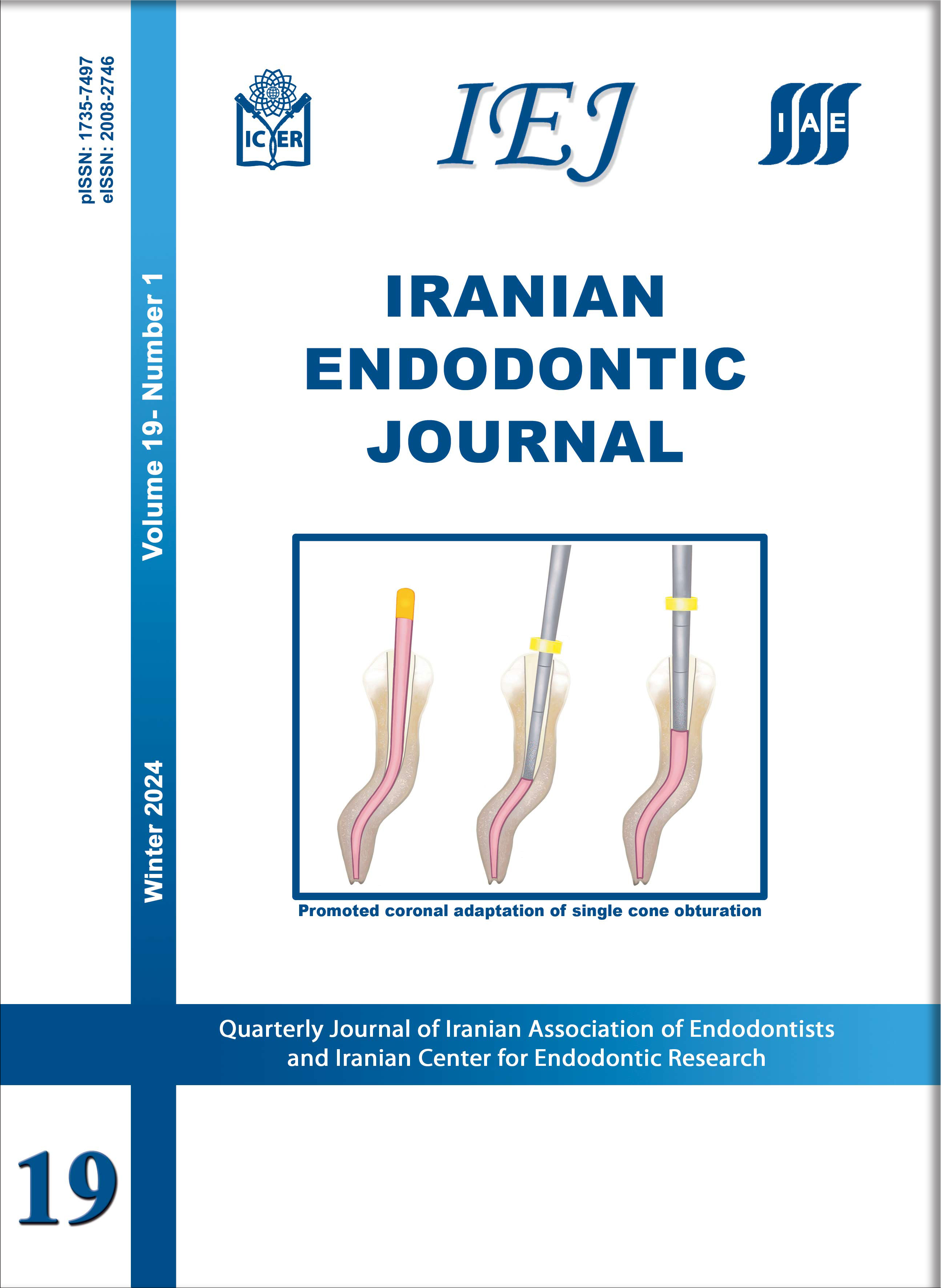Sealing ability of three temporary filling materials in endodontically-treated teeth
Iranian Endodontic Journal,
Vol. 4 No. 1 (2009),
7 January 2009,
Page 1-4
https://doi.org/10.22037/iej.v4i1.1126
INTRODUCTION: Coronal microleakage may significantly reduce the prognosis of endodontic treatment. Temporary restorative materials have a crucial role in preventing the infection of root canals between and after endodontic treatment. This in vitro study was designed to evaluate the coronal microleakage of three temporary restorative materials used in endodontics: Coltosol, Cavisol and Cina. MATERIALS AND METHODS: Seventy-five human premolars and molars were selected for this in vitro study. Access cavities were prepared and amalgam placed on the orifices of canals; the occlusal surfaces were then reduced by 4mm for the temporary restoration. The teeth were divided into three experimental groups of 23 teeth and two control groups of 3 teeth. The access cavities in each group were sealed using one of the test materials and thermal cycling was applied (5-55ºC for 150 cycles). Surfaces were then covered with nail polish and wax; the teeth were immersed in 2% methylene blue dye for 7 days. The teeth were rinsed, dried, and sectioned mesiodistally and evaluated under a stereomicroscope for microleakage. Data was analyzed using Kruskal-Wallis and Mann U Whitney tests. RESULTS: The lowest microleakage value was observed in Cavisol and Coltosol groups and the highest in Cina group (P<0.001). There was no statistical difference between Cavisol and Coltosol. CONCLUSION: Coltosol and Cavisol have appropriate sealing properties as temporary restorations, but the sealing ability of Cina was questionable.




